 Jeep Cherokee Service ManualFuel system » Fuel injection system » Diagnosis and testing
Jeep Cherokee Service ManualFuel system » Fuel injection system » Diagnosis and testing
Visual inspection
Visual inspection
A visual inspection for loose, disconnected or incorrectly routed wires and hoses should be made. This should be done before attempting to diagnose or service the fuel injection system. A visual check will help spot these faults and save unnecessary test and diagnostic time. A thorough visual inspection will include the following checks: (1) Verify the three 32-way electrical connectors are fully inserted into the connector of the Powertrain Control Module (PCM) (Fig. 3).

Fig. 3 Powertrain Control Module (PCM)
1 - (3) 32-WAY CONNECTORS
2 - PCM
(2) Inspect battery cable connections. Be sure they are clean and tight.
(3) Inspect fuel pump relay and air conditioning compressor clutch relay (if equipped). Inspect ASD relay connections. Inspect starter motor relay connections.
Inspect relays for signs of physical damage and corrosion. The relays are located in Power Distribution Center (PDC) (Fig. 4). Refer to label on PDC cover for relay location.
(4) 2.5L Engine: Inspect ignition coil primary connection.
Verify coil secondary cable is firmly connected to coil (Fig. 5).
(5) 4.0L Engine: Inspect ignition coil connection (Fig. 6).

Fig. 4 Power Distribution Center (PDC)
1 - POWER DISTRIBUTION CENTER (PDC)

Fig. 5 Ignition Coil-2.5L Engine
1 - IGNITION COIL
2 - ELECTRICAL CONNECTOR
3 - MOUNTING BOLTS
4 - SECONDARY CABLE
(6) 2.5L Engine: Verify that distributor cap is correctly attached to distributor. Be sure that spark plug cables are firmly connected to the distributor cap and spark plugs are in their correct firing order.
Be sure that coil cable is firmly connected to distributor cap and coil.

Fig. 6 Ignition Coil-4.0L Engine
1 - REAR OF VALVE COVER
2 - COIL RAIL
3 - SLIDE TAB
4 - RELEASE LOCK
5 - COIL CONNECTOR
(7) Connect vehicle to an oscilloscope and inspect spark events for fouled or damaged spark plugs or cables.
(8) Verify generator output wire, generator connector and ground wire are firmly connected to generator.
(9) Inspect system body grounds for loose or dirty connections. Refer to Group 8, Wiring for ground locations.
(10) Verify crankcase ventilation (CCV) operation.
Refer to Group 25, Emission Control System for additional information.
(11) Inspect fuel tube quick-connect fitting-to-fuel rail connections.
(12) Verify hose connections to all ports of vacuum fittings on intake manifold are tight and not leaking.
(13) Inspect accelerator cable, transmission throttle cable (if equipped) and cruise control cable connections (if equipped). Check their connections to throttle arm of throttle body for any binding or restrictions.
(14) If equipped with vacuum brake booster, verify vacuum booster hose is firmly connected to fitting on intake manifold. Also check connection to brake vacuum booster.
(15) Inspect air cleaner inlet and air cleaner element for dirt or restrictions.
(16) Inspect radiator grille area, radiator fins and air conditioning condenser for restrictions.
(17) Verify intake manifold air temperature sensor wire connector is firmly connected to harness connector (Fig. 7) or (Fig. 8).

Fig. 7 Intake Manifold Air Temp. Sensor Location- 2.5L Engine
1 - ELECTRICAL CONNECTOR
2 - INTAKE MANIFOLD TEMPERATURE SENSOR
3 - FUEL INJECTOR
(18) Verify MAP sensor electrical connector is firmly connected to MAP sensor (Fig. 8). Also verify rubber L-shaped fitting from MAP sensor to throttle body is firmly connected (Fig. 9).
(19) Verify fuel injector wire harness connectors are firmly connected to injectors in correct order.
Each harness connector is numerically tagged with injector number (INJ 1, INJ 2 etc.) of its corresponding fuel injector and cylinder number.
(20) Verify harness connectors are firmly connected to idle air control (IAC) motor and throttle position sensor (TPS) (Fig. 8).
(21) Verify wire harness connector is firmly connected to engine coolant temperature sensor (Fig.
10).
(22) Raise and support vehicle.

Fig. 8 Sensor Locations-4.0L Engine
1 - MOUNTING BOLTS (4)
2 - THROTTLE BODY
3 - IAC MOTOR
4 - ELEC. CONN.
5 - TPS
6 - MAP SENSOR
7 - ELEC. CONN.
8 - IAT SENSOR
9 - ELEC. CONN.

Fig. 9 Rubber L-Shaped Fitting-MAP Sensor-to-Throttle Body
1 - THROTTLE BODY
2 - MAP SENSOR
3 - RUBBER FITTING
4 - MOUNTING SCREWS (2)
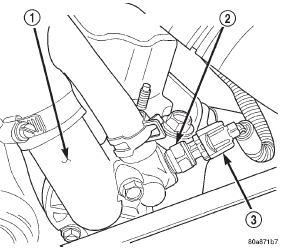
Fig. 10 Engine Coolant Temperature Sensor-Typical
1 - THERMOSTAT HOUSING
2 - ENGINE COOLANT TEMPERATURE SENSOR
3 - ELECTRICAL CONNECTOR
(23) Verify that all oxygen sensor wire connectors are firmly connected to sensors. Inspect sensors and connectors for damage (Fig. 11), (Fig. 12), (Fig. 13) or (Fig. 14).

Fig. 11 Front Oxygen Sensor-4.0L-Federal Emissions
1 - 1/1 O2S
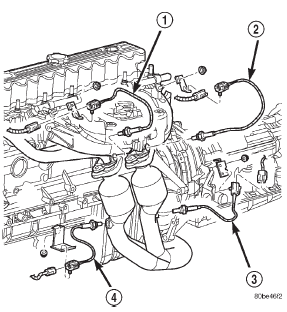
Fig. 12 Oxygen Sensors-4.0L-California Emissions
1 - 1/1 O2S
2 - 2/1 O2S
3 - 2/2 O2S
4 - 1/2 O2S
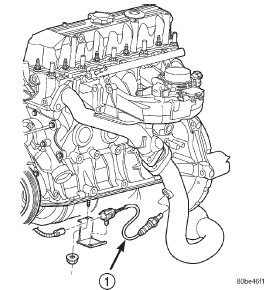
Fig. 13 Front Oxygen Sensor-2.5L-Federal Emissions
1 - 1/1 O2S
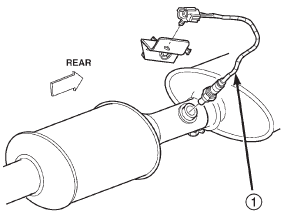
Fig. 14 Rear Oxygen Sensor-2.5L/4.0L-Federal Emissions
1 - 1/2 O2S
(24) Inspect for pinched or leaking fuel tubes.
Inspect for pinched, cracked or leaking fuel hoses.
(25) Inspect for exhaust system restrictions such as pinched exhaust pipes, collapsed muffler or plugged catalytic convertor.
(26) If equipped with automatic transmission, verify electrical harness is firmly connected to park/neutral switch. Refer to Automatic Transmission section of Group 21.
(27) Verify that electrical harness connector is firmly connected to the vehicle speed sensor (Fig. 15).
(28) 2.5L 4-Cylinder Engine Only: Verify good electrical connection at power steering pressure switch (Fig. 16). This switch is not used with 4.0L engines.
(29) Verify good electrical connections at fuel pump module connector at front of fuel tank (Fig. 17).
(30) Verify good EVAP canister vent line connection at front of fuel tank (Fig. 17).
(31) Verify good fuel supply line connection at front of fuel tank (Fig. 17).
(32) Inspect all fuel lines/hoses for cracks or leaks.
(33) Inspect transmission torque convertor housing (automatic transmission) or clutch housing (manual transmission) for damage to timing ring on drive plate/flywheel.
(34) Verify battery cable and solenoid feed wire connections to starter solenoid are tight and clean.
Inspect for chaffed wires or wires rubbing up against other components.
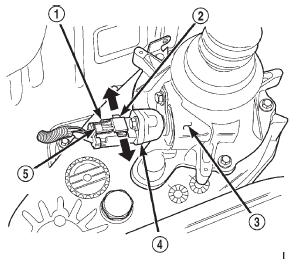
Fig. 15 Vehicle Speed Sensor-Typical-4WD Shown
1 - SENSOR ELECTRICAL CONNECTOR
2 - SLIDE TAB
3 - 4WD TRANSFER CASE EXTENSION
4 - VEHICLE SPEED SENSOR
5 - RELEASE LOCK
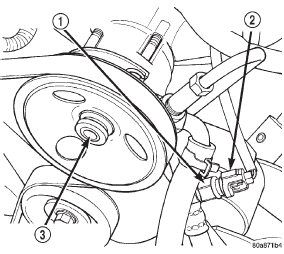
Fig. 16 Power Steering Pressure Switch-2.5L Engine
1 - POWER STEERING PRESSURE SWITCH
2 - ELECTRICAL CONNECTOR
3 - POWER STEERING PUMP
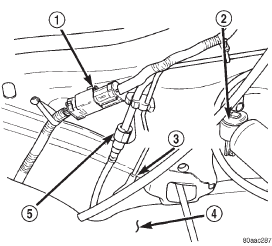
Fig. 17 Fuel Tank Connections at Front of Fuel Tank
1 - FUEL PUMP MODULE CONNECTOR
2 - LEFT-REAR SHOCK ABSORBER
3 - EVAP CANISTER VENT LINE CONNECTION
4 - FRONT OF FUEL TANK
5 - FUEL SUPPLY LINE CONNECTION
Visual inspection
ASD and fuel pump relays
Throttle body minimum air flow check procedure
Jeep Cherokee Service Manual
- Lubrication and maintenance
- Suspension
- Differential and driveline
- Brakes
- Clutch
- Cooling system
- Battery
- Starting systems
- Charging system
- Ignition system
- Instrument panel systems
- Audio systems
- Horn systems
- Speed control system
- Turn signal and hazard warning systems
- Wiper and washer systems
- Lamps
- Passive restraint systems
- Electrically heated systems
- Power distribution systems
- Power lock systems
- Vehicle theft/security systems
- Power seat systems
- Power window systems
- Power mirror systems
- Chime/buzzer warning systems
- Overhead console systems
- Engine
- Exhaust system
- Frame and bumpers
- Frame
- Fuel system
- Steering
- Transmission and transfer case
- Tires and wheels
- Body
